Setting Up a Custom View
LAST UPDATED: MAY 7, 2025
PREREQUISITE
The Enable Custom View role token must be selected.
Procedures
Creating a Simple Custom View
Drag the table's column headers into the Saved Searches field to define groupings.

Observe the number of groupings reflected in a hierarchical structure, aligned with the order in which the attributes are positioned within the Saved Searches field.
.png?inst-v=42f6df80-df0f-4ec4-af2e-6f907a55cc8f)
Click on the
 button next to the Incidents accordion.
button next to the Incidents accordion..png?inst-v=42f6df80-df0f-4ec4-af2e-6f907a55cc8f)
Create the custom view.
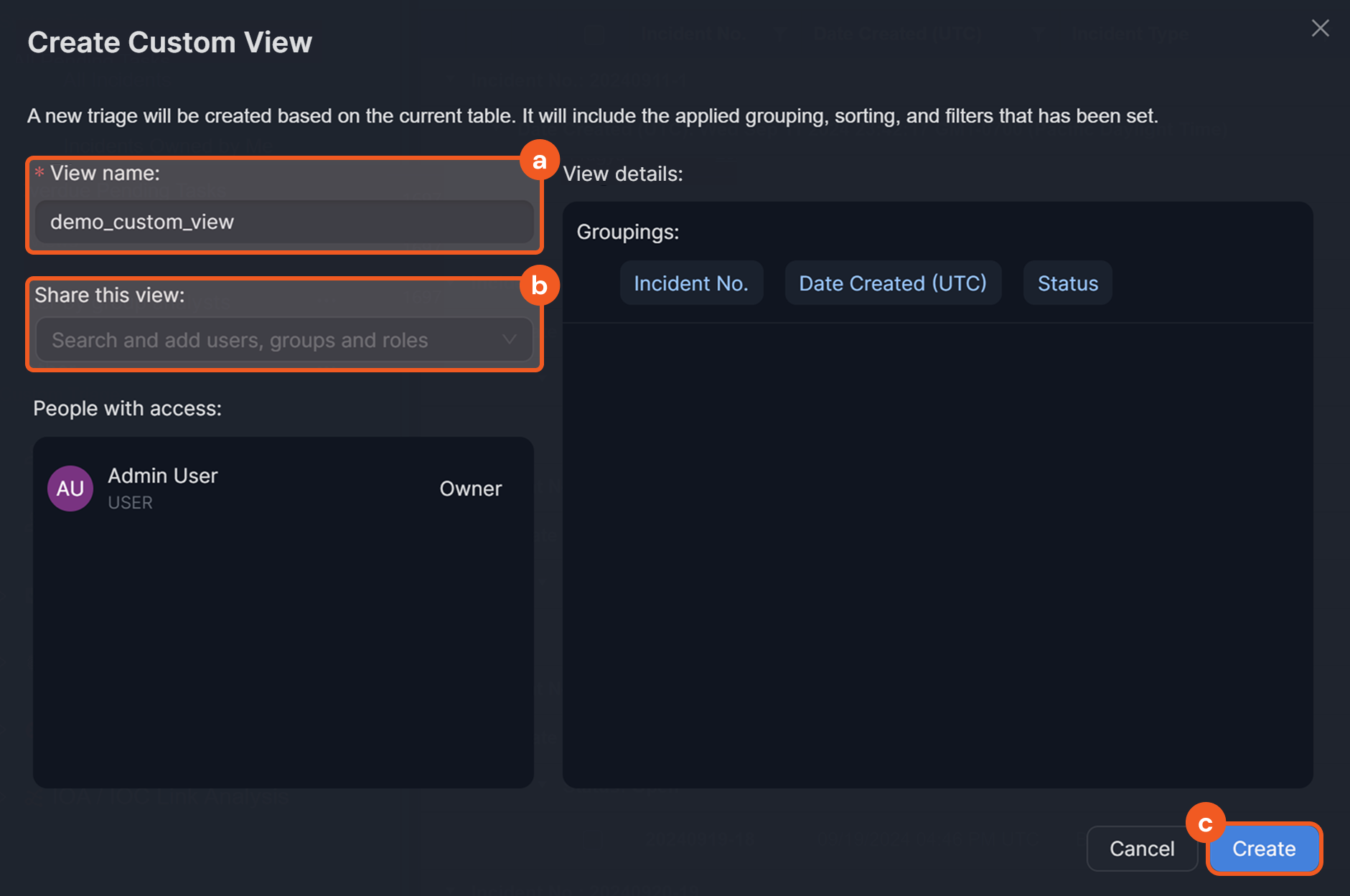
Input a unique custom view name.
(Optional) Grants access to this custom view for other users, groups, or roles.
Click on the Create button.
Click the newly created the custom view to view it.
%202-20250428-211845.png?inst-v=42f6df80-df0f-4ec4-af2e-6f907a55cc8f)
RESULT
Users can now return to this custom view from any other view.
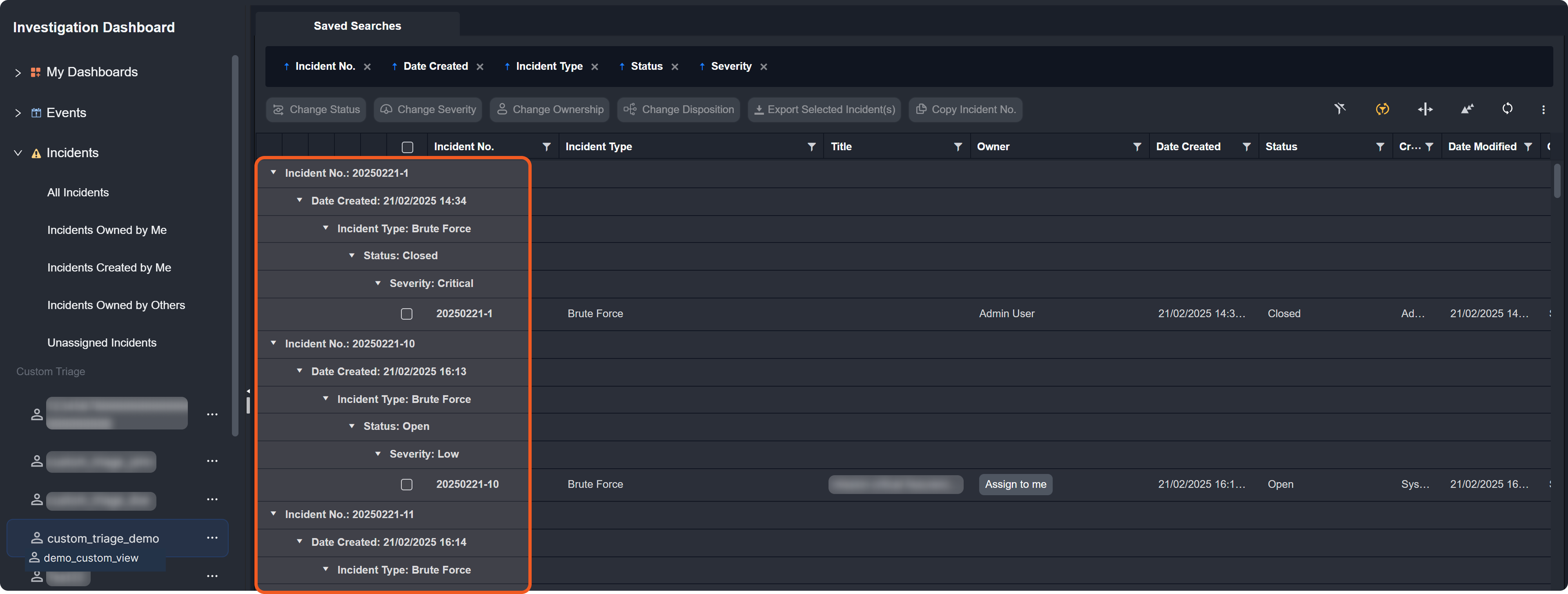
Creating a Custom View with Predefined Sort Orders and Filters
Users can further customize their views by sorting data in ascending or descending order by table headers and applying filters.
Sorting Using Table Headers
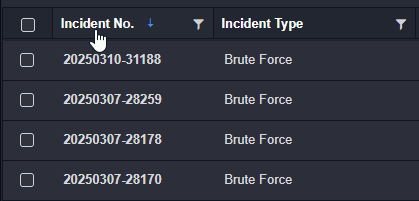
To sort the table by a different column, click the Incident No. header until no arrow appears, then click another attribute.
If users drag a header into the Saved Searches field while sorting is applied, a Column Sorting section will appear in the Edit View popup, reflecting the applied sorting in either ascending or descending order.
-20250429-010902.png?inst-v=42f6df80-df0f-4ec4-af2e-6f907a55cc8f)
Ordering Headers in the Saved Searches Field
The order of headers in the Saved Searches field determines how incidents are grouped and sorted in the table.
The leftmost header serves as the primary grouping.
Each subsequent header to the right creates nested subgroups.
The rightmost header defines the most specific sorting level within the final subgroup.
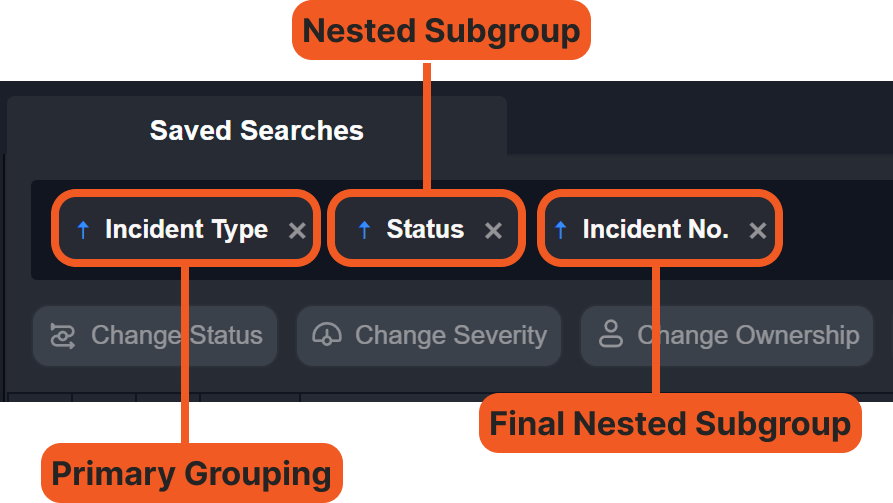
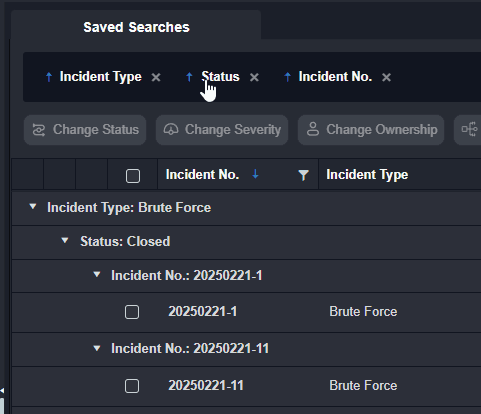
Rearranging the sorting structure by dragging the Status field to the first position.
Users can modify the sorting structure by dragging headers into different positions within the Saved Searches field, ensuring the data is displayed in a way that best supports their triaging needs.
If a table header can contain repeatable values—such as Incident Type or Status (i.e., there can be many phishing-type and "Open" incidents)—users can change the sorting direction of incidents within each group (accordion) by clicking its attribute in the Saved Searches field.
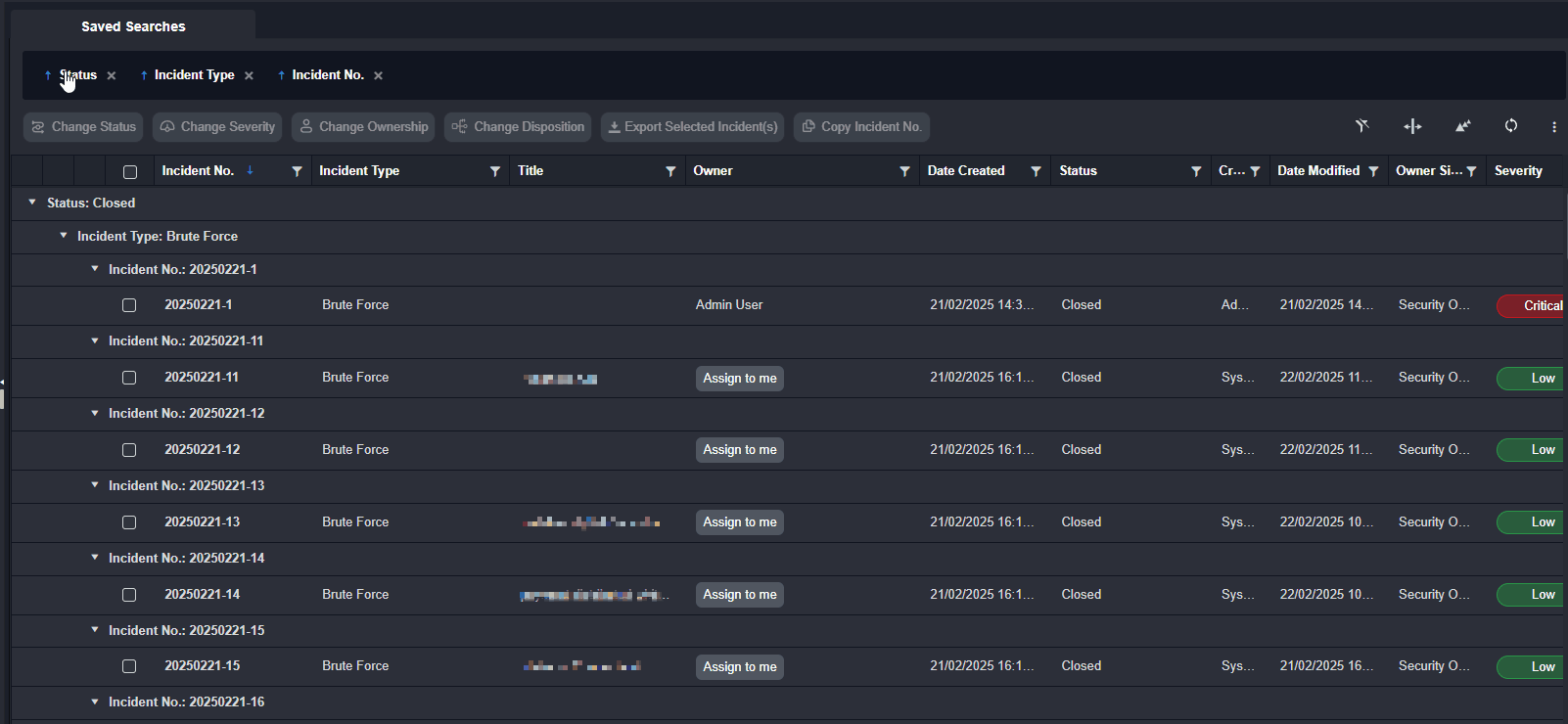
Arranging incidents in the largest accordion by Status in descending order, and then within each Status, sort the incidents by Incident Type in descending order.
Applying a Filter
Users can click the  button on any table header to apply filters and display data matching specific incident attributes. Multiple filters can be applied across one or more table headers.
button on any table header to apply filters and display data matching specific incident attributes. Multiple filters can be applied across one or more table headers.
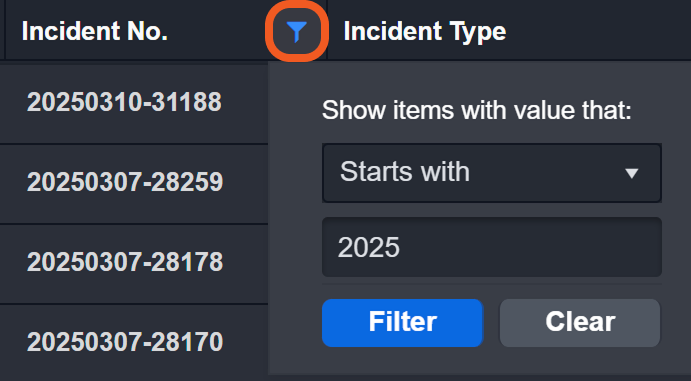
A filter on the Incident No. table header that displays only incidents where the incident number begins with 2025.
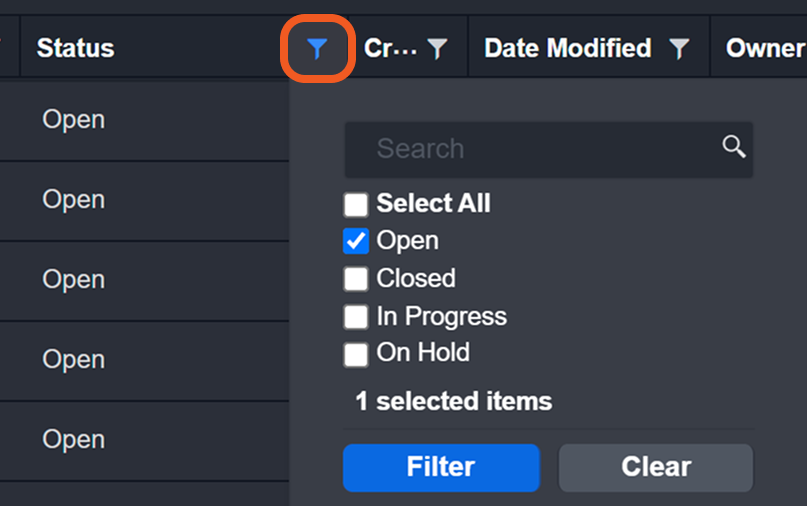
A filter on the Status table header that displays only incidents with the Open status.

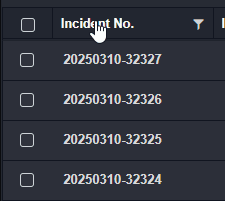
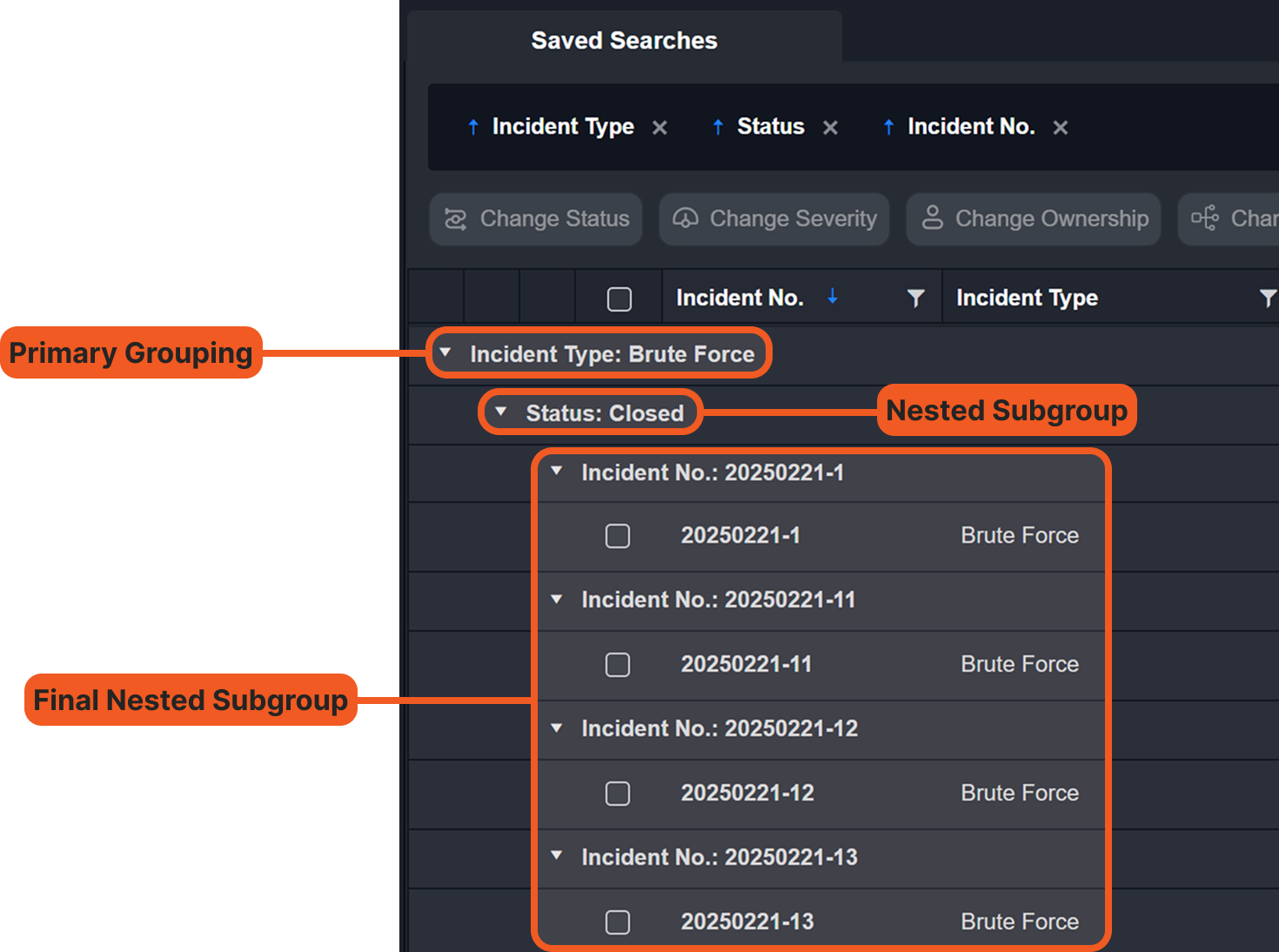
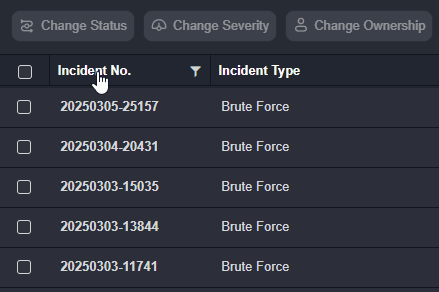
.png?inst-v=42f6df80-df0f-4ec4-af2e-6f907a55cc8f)
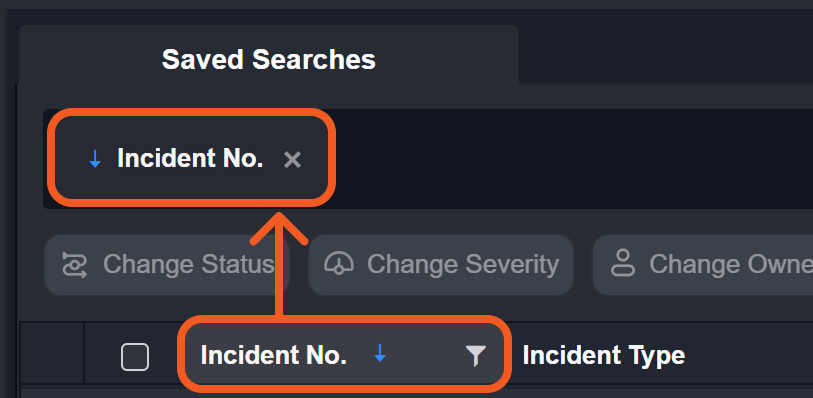


-20250428-215747.png?inst-v=42f6df80-df0f-4ec4-af2e-6f907a55cc8f)
%202%20(1)-20250428-215821.png?inst-v=42f6df80-df0f-4ec4-af2e-6f907a55cc8f)
-20250428-220812.png?inst-v=42f6df80-df0f-4ec4-af2e-6f907a55cc8f)